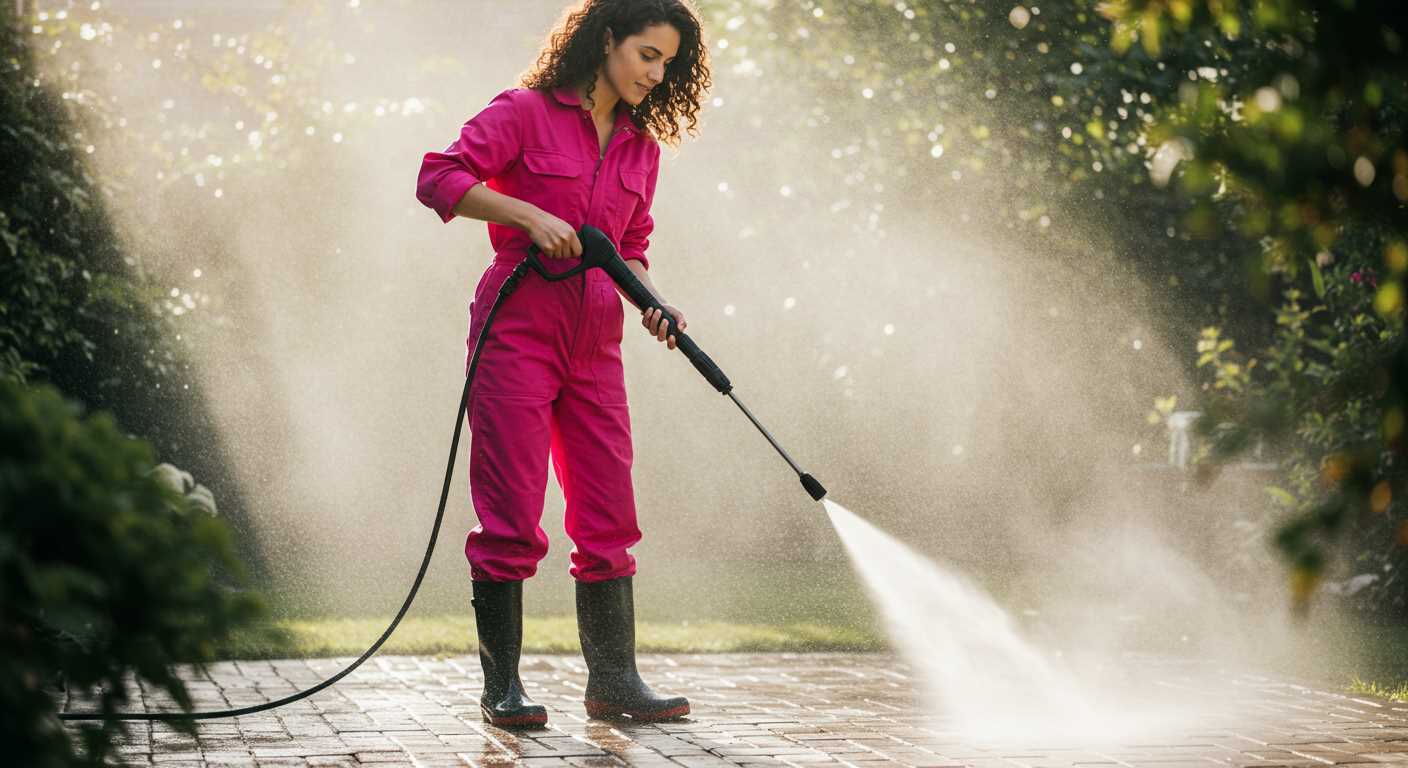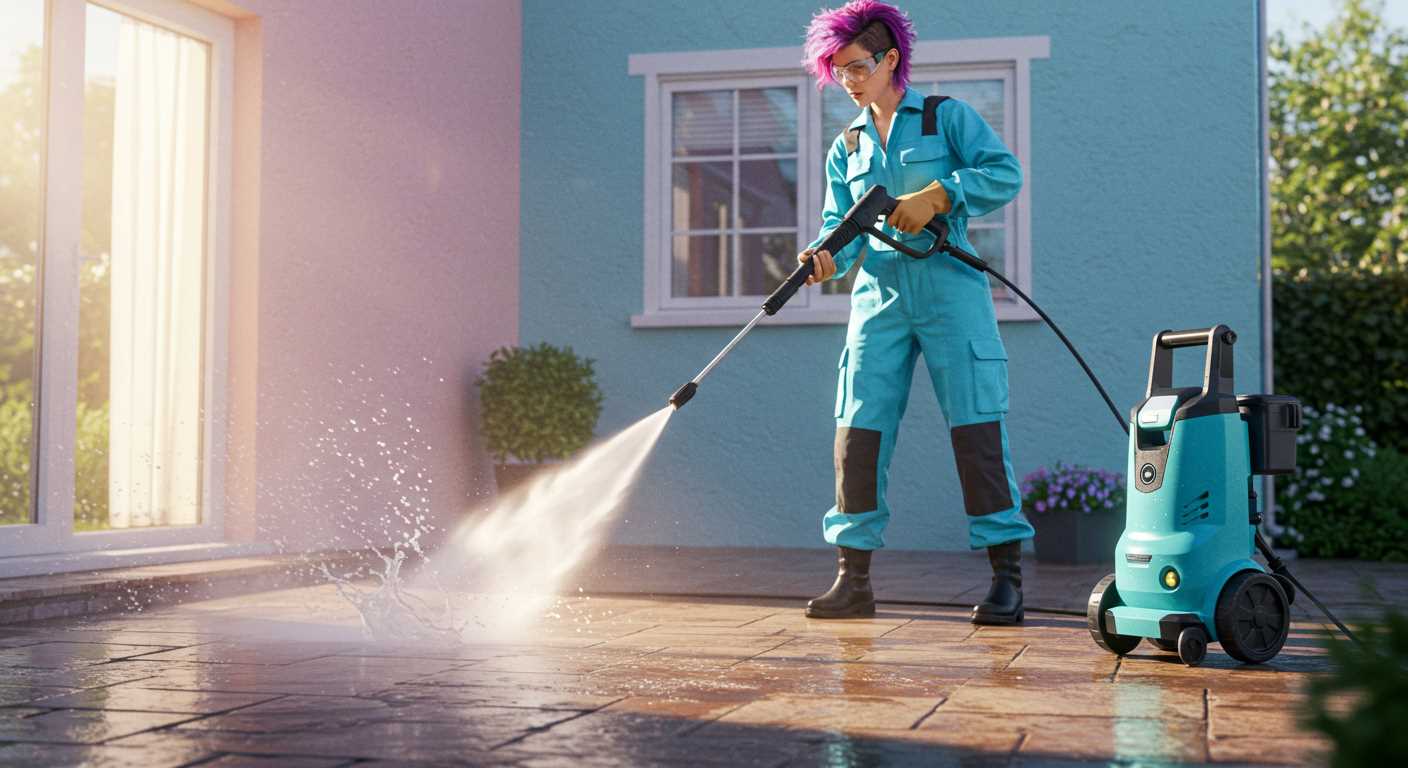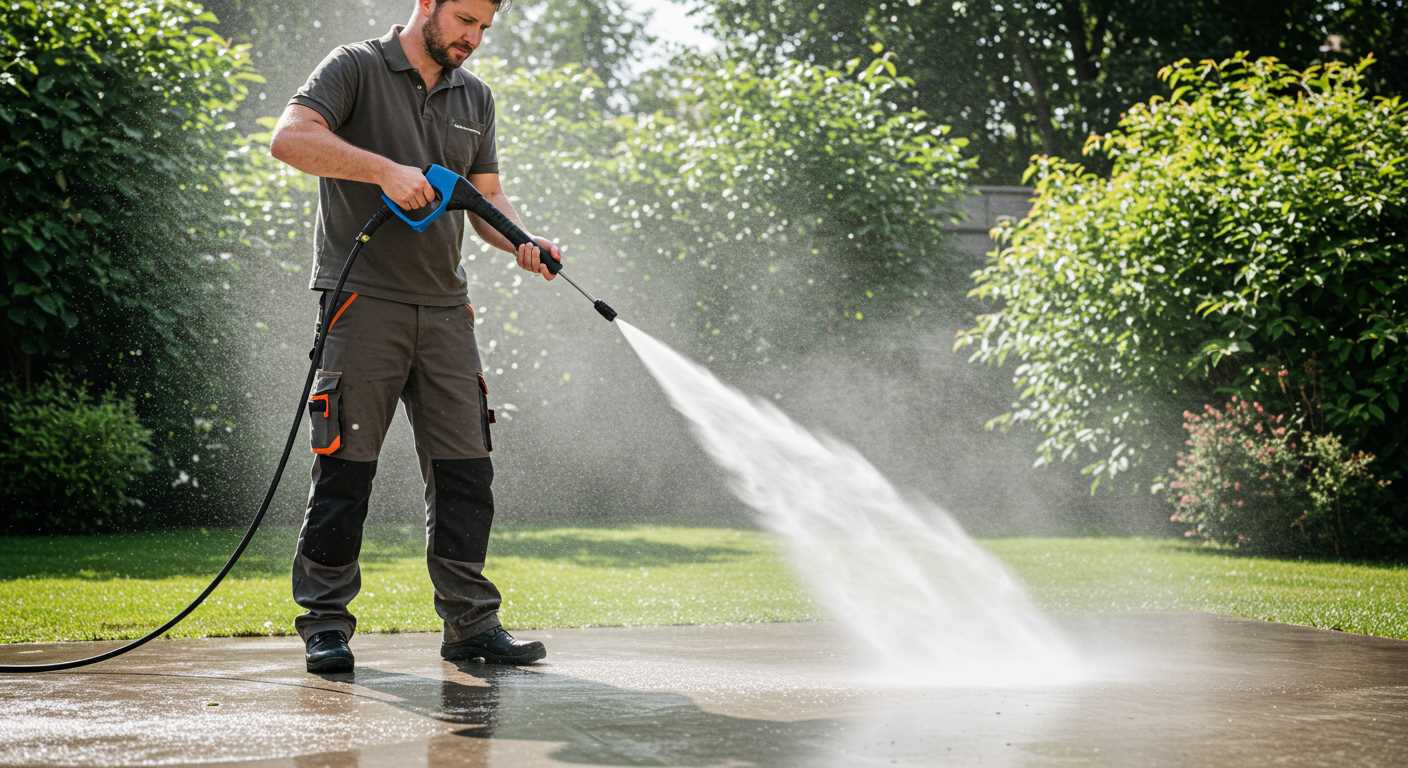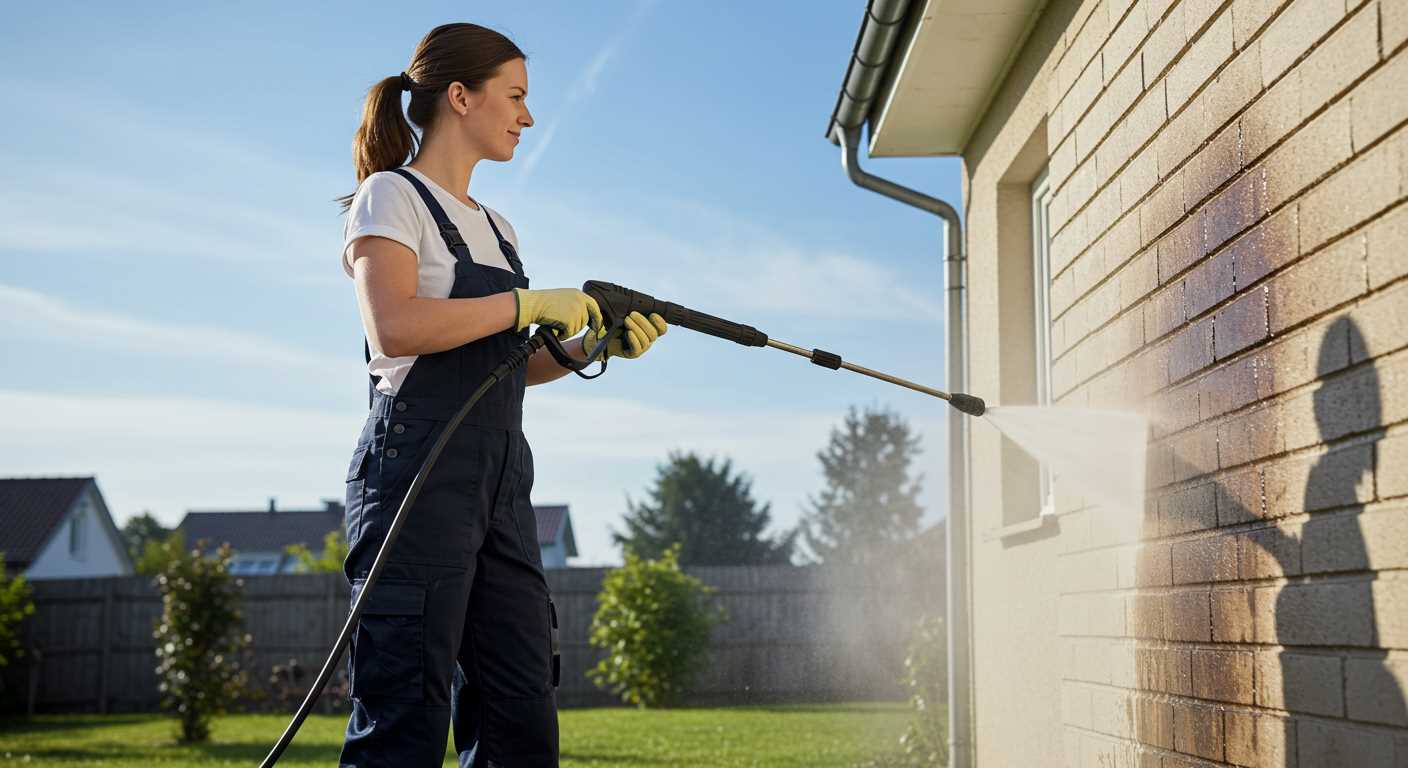



When seeking an effective tool for meticulous vehicle maintenance, I recommend the Kärcher K5 Premium. With a powerful motor delivering 145 bar of pressure, it strikes an excellent balance between strength and safety for delicate surfaces. The adjustable nozzle allows for precise application, making it ideal for a range of tasks from removing stubborn grime to gentle washing of painted surfaces.
Another remarkable choice is the Sun Joe SPX3000, which efficiently operates at 2030 PSI. Its dual detergent tank system enables the use of two different cleaning agents simultaneously, enhancing versatility. This model has proven particularly adept at breaking down tough stains while still being gentle on finishes, making it a preferred option among car enthusiasts.
For those prioritising portability, the Greenworks GPW1501 is noteworthy. Weighing under 21 pounds, it is easily manoeuvrable yet still offers a respectable 1500 PSI. This lightweight unit does not compromise cleaning capabilities, making it a convenient option for quick touch-ups or detailed cleaning tasks.
Choosing the right equipment hinges on specific requirements, including cleaning power, convenience, and compatibility with various detergents. Each of these machines presents unique strengths that cater to different needs while ensuring a thorough clean without damaging your vehicle’s finish.
Choosing the right PSI for wash jobs
For effective cleaning without damage, select equipment with a PSI range between 1200 and 1900. This level delivers sufficient force to remove dirt and grime while preserving your vehicle’s surfaces.
At 1200 PSI, you can easily handle delicate finishes and sensitive areas, such as trim and paint. This pressure is perfect for light cleaning tasks like washing off dust or pollen. On the other hand, 1900 PSI provides extra power for tackling stubborn stains, mud, or debris without risking paint damage if used correctly.
Pay attention to the nozzle type as well. A wide-angle nozzle (25-40 degrees) complements lower PSI, spreading the spray over a larger area and reducing the risk of damage. A narrower nozzle (15 degrees) works best with higher PSI levels, allowing for a concentrated stream ideal for challenging spots but requiring careful use.
Consider the surface you are cleaning. Softer materials and finishes require the lower end of the PSI spectrum, while tougher surfaces like wheels and undercarriage can handle higher pressures. Make adjustments based on surface type to avoid scratches or other damage.
In addition, always test pressure settings on inconspicuous areas before proceeding with a full wash. This precaution helps determine the best approach for your vehicle’s specific needs while minimizing risk.
Essential Features to Consider in a High-Pressure Cleaner
Seeking an effective cleaning device means focusing on key attributes. First, a variable pressure control allows precise adjustments for different surfaces, ensuring optimal results without damage. Look for options that provide a range from low to high PSI. This flexibility is beneficial, especially for delicate areas like paintwork and tougher grime.
Mobility is another factor. Select a model with sturdy wheels and a lightweight design, enabling easy manoeuvring around your vehicle. Compact units can also be advantageous for storage purposes, making them a practical choice for limited spaces.
Water Flow Rate
Evaluate the GPM (gallons per minute) rating; higher flow rates mean faster cleaning. Models with a GPM of 1.5 or higher often prove efficient for washing vehicles. A balance between PSI and GPM ensures you can tackle varying cleaning tasks effectively.
Nozzle Options

Diversifying your cleaning approach is possible with interchangeable nozzles. Opt for a device that includes various spray patterns. A 0-degree nozzle works well for stubborn dirt, while a 40-degree option is gentler for sensitive areas. This versatility enhances the cleaning experience and efficiency.
Comparison of Electric vs Petrol Pressure Washers

For those seeking to clean vehicles effectively, understanding the distinctions between electric and petrol models is crucial. Electric variants are ideal for smaller jobs, offering convenience with lighter weights and quieter operation. They typically range from 1100 to 2000 PSI, making them suitable for routine maintenance and light dirt removal.
Electric Models
Electric options stand out for their ease of use and lower upkeep. They connect directly to a power source, eliminating the need for fuel. Additionally, they require minimal maintenance, mainly focusing on ensuring the motor remains clean and connections are intact. Their compact nature allows for storage in tight spaces, which is beneficial for casual users.
Petrol Models

Petrol-powered machines deliver superior power, usually exceeding 3000 PSI. This level is advantageous for tackling tough grime and larger vehicles. However, they demand more attention in terms of maintenance, requiring regular checks of the engine and fuel systems. While mobility is a strong point due to their independence from electrical outlets, they can be heavier and noisier, making them less suitable for residential neighbourhoods.
| Feature | Electric Models | Petrol Models |
|---|---|---|
| Power Source | Electricity | Petrol |
| Pressure Range (PSI) | 1100 – 2000 | 2000 – 4000+ |
| Portability | High (cord-dependent) | High (no cords) |
| Maintenance | Low | Moderate to High |
| Noise Level | Low | High |
Choosing between these options largely depends on personal preferences and specific cleaning tasks. If quick, quiet, and easy operation is important, an electric model suffices. Conversely, for those tackling intense dirt or larger surfaces without concern for noise, a petrol variant proves advantageous.
Recommended pressure washer models for car detailing
For exceptional results in automotive cleaning, the Sun Joe SPX3000 stands out. Its 2030 PSI and 1.76 GPM provide ample power for removing dirt and grime from vehicles without risking damage.
The Karcher K5 Premium Electric Power Washer is another reliable option. With a 2000 PSI output and an adjustable pressure setting, it allows for effective cleaning across various surface types, making it ideal for sensitive areas on cars.
For those preferring a more robust option, the Simpson Cleaning MSH3125 MegaShot delivers 3200 PSI and is equipped with a Honda engine. It excels in tackling tough stains while maintaining a thorough wash on the vehicle’s exterior.
If you’re looking for portability, the Ryobi RY141612 is a great choice, featuring 1600 PSI. This compact model is perfect for light cleaning jobs and offers easy manoeuvrability without compromising performance.
For versatility, the Greenworks 1500 PSI Electric Pressure Cleaner is worth considering. It is lightweight, designed for ease of use, and comes with various nozzles for different cleaning tasks.
Each of these models has been tested extensively in practical scenarios, ensuring they meet the high standards required for auto detailing. Choose the one that fits your cleaning regimen and experience level for optimum outcomes.
How to Safely Use a Pressure Washer on Your Vehicle
Begin by positioning the nozzle at least two feet away from your vehicle’s surface. This distance helps to prevent any damage to paint or trim. Adjust the spray pattern to a wide fan setting for larger areas and switch to a narrower setting for tough grime around wheels and bumpers.
Prioritise Proper Preparation
Before starting, ensure your automobile is cool to the touch, ideally washing it in the shade. Remove any loose debris or dirt with a soft brush or cloth to reduce the risk of scratches during washing. Always check that windows and doors are securely closed to prevent water ingress.
Use Safe Detergents

Select cleaning solutions specifically designed for automotive use. Avoid harsh chemicals that can strip wax or damage finishes. Apply detergent with the low-pressure setting for better control. Rinse thoroughly to avoid any residue build-up that can affect the paint’s clarity.
Regularly check the equipment for leaks or any signs of wear. Pay attention to the connections and hose; a little maintenance can go a long way in ensuring efficiency and safety during use. Following these guidelines will give your vehicle a thorough clean while preserving its finish.
Maintenance tips for prolonging your pressure cleaner’s life
Regular upkeep is fundamental for extending the operational lifespan of your cleaning device. Here are some actionable tips to ensure optimal performance:
- Annual Inspection: Conduct an annual check-up of all components, including hoses and connections, for signs of wear and tear.
- Clean Filters: Inspect and clean the air and water intake filters frequently to maintain efficient water flow and air circulation.
- Use the Right Detergent: Always use compatible cleaning agents to prevent damage to internal components and ensure effective cleaning.
- Flush the System: After each use, run clean water through the machine to remove any detergent residue that may cause clogging or damage.
- Winter Storage: In colder climates, winterize the unit by draining all water and adding a pump protector to avoid freezing damage.
- Check Gaskets and Seals: Regularly inspect gaskets and seals for leaks; replace any damaged parts to maintain pressure and prevent performance issues.
- Avoid Overheating: Don’t operate the equipment for extended periods without breaks, as overheating can lead to malfunctions.
- Regular Lubrication: Apply lubricant to moving parts, ensuring smooth operation and reducing friction-related wear.
- Store Properly: Keep the device in a dry, sheltered place to avoid rust and moisture-related issues. Ensure that hoses are coiled and not kinked to prevent damage.
Following these guidelines will not only enhance the longevity of your cleaning apparatus but also improve its efficiency during use. Be proactive with maintenance to avoid costly repairs down the line.








